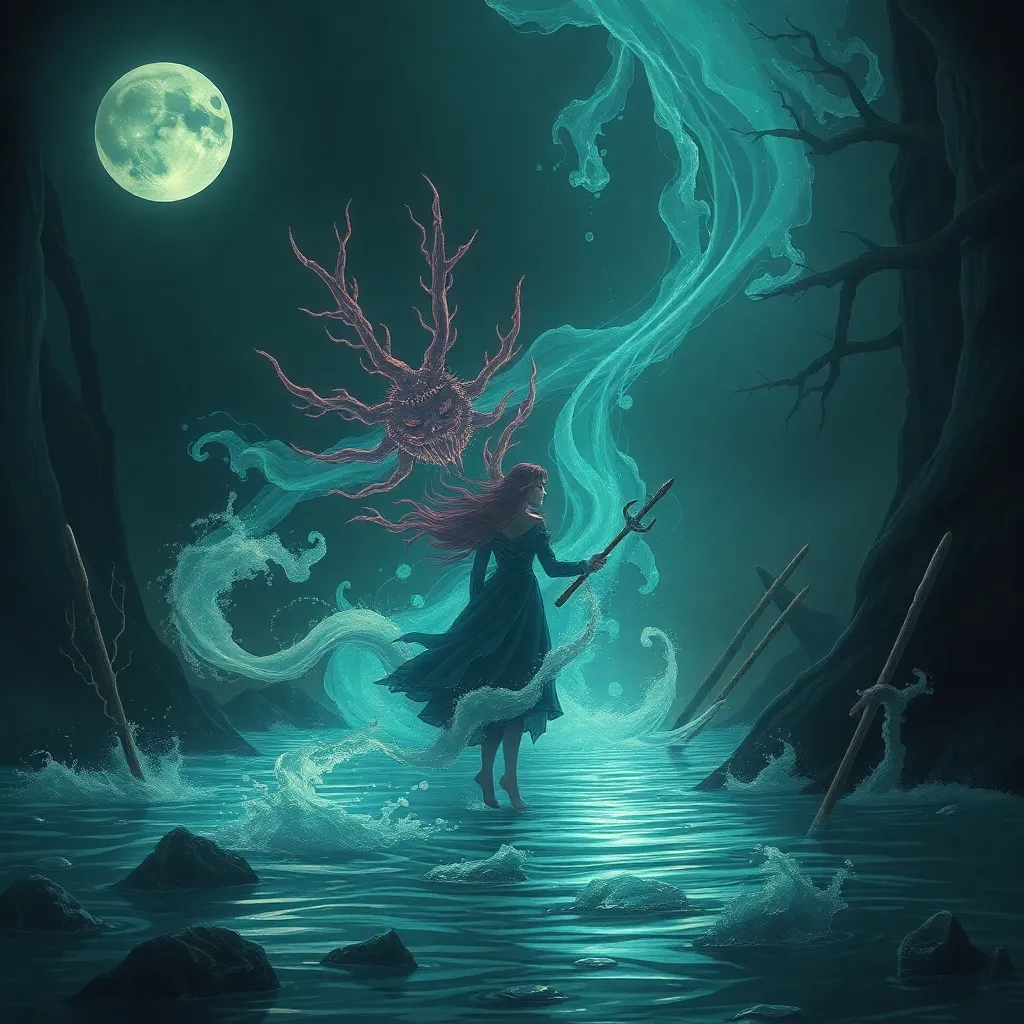The Rusalka’s Revenge: Examining the Themes of Justice and Vengeance in Water Spirit Tales
I. Introduction
The Rusalka, a captivating figure in Slavic mythology, embodies the complexities of water spirits. Typically depicted as beautiful young women, these ethereal beings are intrinsically linked to aquatic environments and often represent the duality of nature—both nurturing and destructive. Throughout folklore, water spirits like the Rusalka have played significant roles in conveying moral lessons, exploring themes of justice and vengeance.
This article aims to delve into the rich tapestry of Rusalka mythology, examining the essential themes of justice and vengeance that pervade water spirit tales. By understanding these motifs, we can glean insights into societal values and the human experience reflected in these narratives.
II. The Origins of the Rusalka Myth
To appreciate the Rusalka myth, it is essential to consider its historical context. Originating from Slavic folklore, Rusalki are often associated with water bodies such as rivers, lakes, and streams. These spirits are believed to be the souls of young women who met tragic ends, often due to betrayal, love lost, or societal injustice.
Over the centuries, the Rusalka narrative has evolved significantly. Initially, Rusalki were viewed as nature spirits, embodying the beauty and peril of the natural world. As the tales spread, they began to symbolize the plight of women in a patriarchal society, thus gaining a more profound cultural significance.
The cultural importance of water spirits in Slavic traditions cannot be overstated. They serve as cautionary figures, warning against the dangers of neglecting nature and the consequences of societal transgressions. As such, they have become integral to the folklore that shapes regional identities.
III. The Rusalka as a Symbol of Justice
In many tales, Rusalki are portrayed as wronged women, often victims of betrayal or societal expectations. Their narratives frequently highlight themes of injustice, particularly in relation to gender and agency. For example, a common motif involves a woman who, after being abandoned or mistreated, transforms into a Rusalka to exact revenge on her betrayer.
- Betrayal and societal injustice: The Rusalka’s transformation often serves as a means of addressing the wrongs committed against her. She becomes a symbol of resistance against patriarchal oppression.
- Justice served: In several tales, the Rusalka’s actions lead to justice being served, whether through the demise of her betrayer or the revelation of their misdeeds.
Such depictions resonate with audiences, as they reflect the struggle for justice in a world where women’s voices are often marginalized. The Rusalka embodies the fight against societal injustices, serving as a powerful reminder of the consequences of betrayal.
IV. Vengeance as a Central Motif
Vengeance emerges as a central theme in Rusalka tales, showcasing the transformation of these spirits from victims to avengers. Many stories depict Rusalki as seeking retribution against those who wronged them, illustrating a shift from passive suffering to active resistance.
For instance, in certain narratives, a Rusalka lures her betrayer to the water, where she exacts her revenge, demonstrating the lengths to which she will go to reclaim her agency. This transition from victimhood to vengeance raises important questions about morality and justice.
- Analysis of vengeance: The tales often present vengeance not merely as an act of retribution but as a complex response to deep-seated pain and injustice.
- Moral implications: While vengeance can be seen as justified, these narratives also challenge readers to consider the potential consequences of such actions, prompting reflection on the cycle of violence.
V. The Duality of Rusalka: Benevolent vs. Malevolent
Rusalki are characterized by their dual nature, often oscillating between benevolent and malevolent portrayals. This duality reflects the complexities of human emotion and the moral ambiguity present in their stories.
On one hand, Rusalki can be seen as nurturing figures, protecting the waters and guiding lost souls. On the other hand, they can embody malevolence, luring unsuspecting individuals to their doom. This contrast allows for a rich exploration of character development.
- Choice and agency: The Rusalka’s actions often hinge on her choices, reflecting her emotional state and the influences of her past. This aspect emphasizes the role of personal agency in determining one’s fate.
- Justice vs. vengeance: The balance between justice and vengeance in Rusalka tales illustrates the complexity of moral decisions, often leaving the audience to ponder the righteousness of her actions.
VI. Comparative Analysis with Other Water Spirits
When examining the Rusalka, it is valuable to consider its similarities and differences with other cultural water spirits, such as mermaids and naiads. While these beings share certain characteristics, their narratives often diverge significantly.
- Similarities: All these water spirits are associated with beauty and danger, often serving as metaphors for the unpredictability of nature.
- Differences: Unlike mermaids, who are frequently romanticized, Rusalki are more often depicted through a lens of tragedy and revenge, emphasizing their origins as wronged women.
These comparisons highlight the universal themes of justice and vengeance across cultures, illustrating how different societies grapple with similar human experiences. The Rusalka’s stories, in particular, reflect broader societal values and the intricacies of human relationships.
VII. Modern Interpretations and Adaptations
The influence of Rusalka mythology has permeated contemporary media, resulting in various adaptations that reimagine these tales for new audiences. Modern interpretations often retain the core themes of justice and vengeance while infusing them with contemporary relevance.
- Retellings: Films, literature, and art that draw from Rusalka mythology frequently explore themes of female empowerment, highlighting the Rusalka as a figure of strength and resilience.
- Cultural shifts: As societal norms evolve, the perception of Rusalki also changes, allowing for a more nuanced understanding of their motivations and actions.
These modern adaptations demonstrate the enduring legacy of the Rusalka myth, as it continues to resonate with contemporary audiences grappling with issues of justice and vengeance.
VIII. Conclusion
In summary, the exploration of Rusalka mythology reveals essential themes of justice and vengeance that resonate deeply within human experiences. Through the lens of these water spirits, we gain insight into societal values, the complexities of morality, and the struggles against injustice.
The enduring legacy of the Rusalka myth serves as a reminder of the power of folklore in shaping our understanding of justice and vengeance. As we reflect on these narratives, we are invited to consider the broader implications of their messages in our own lives and societies.



